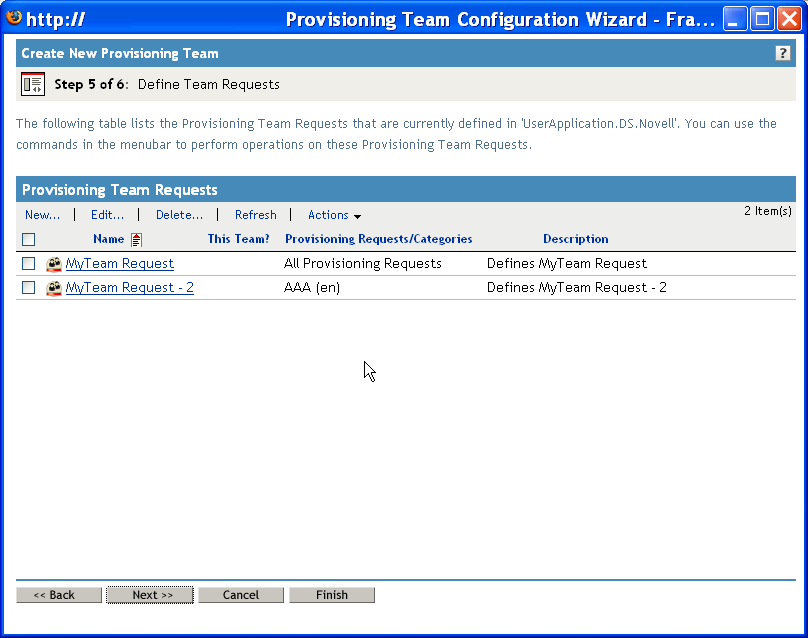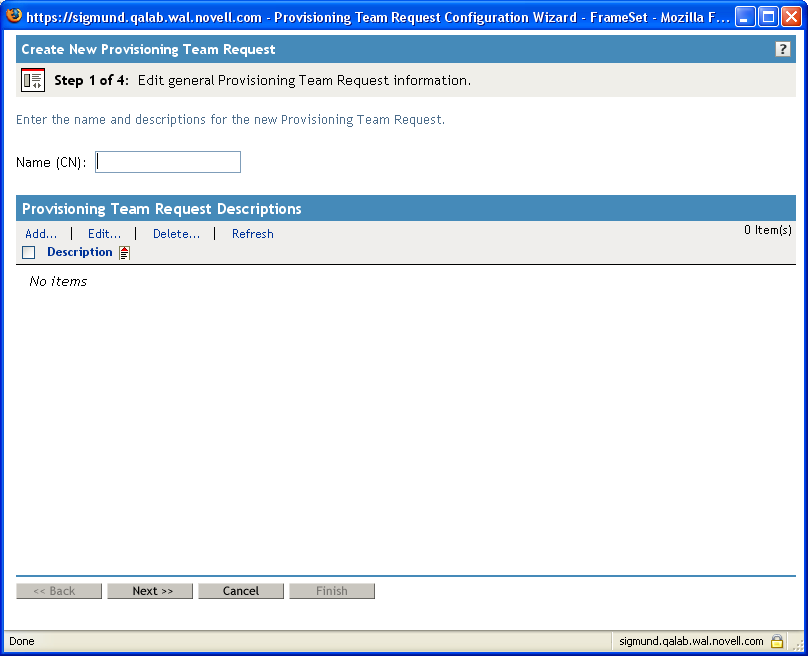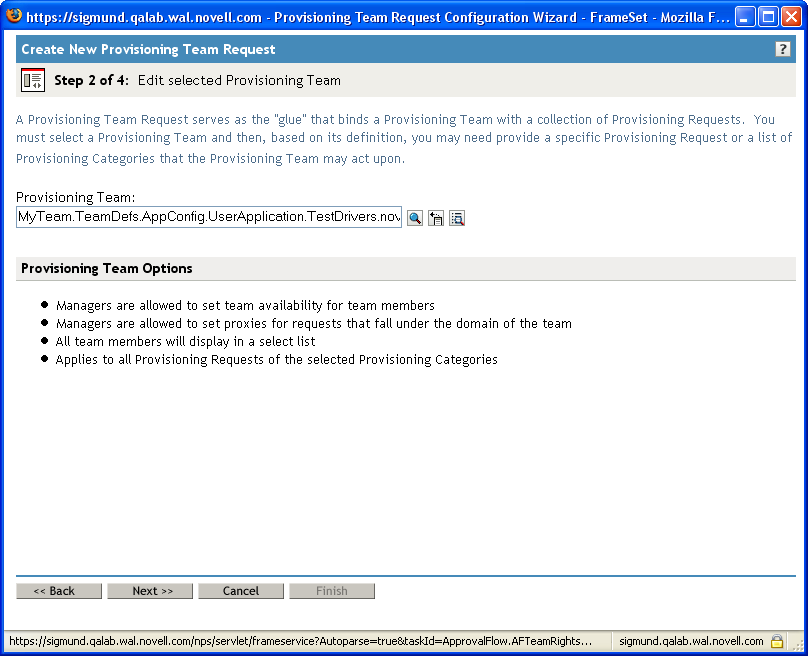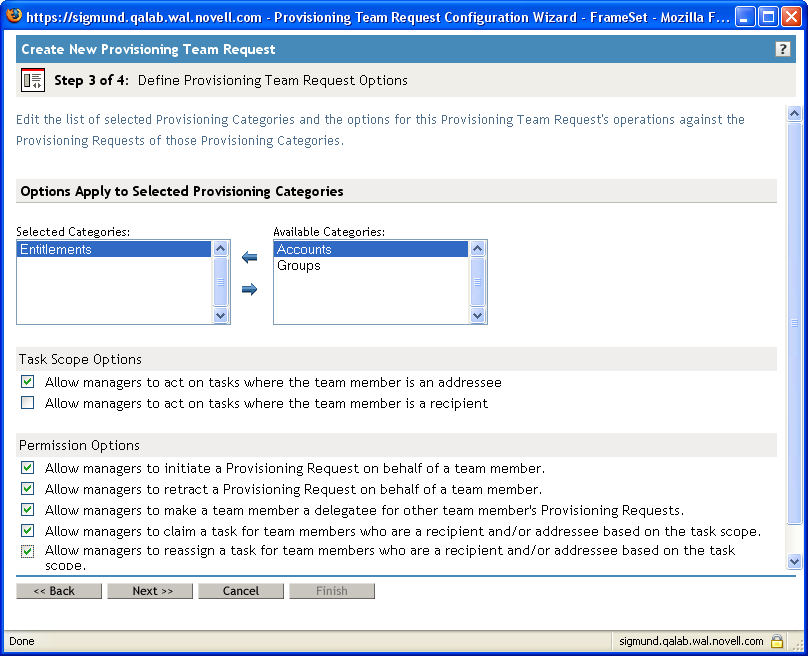19.3 Managing Provisioning Team Request Rights
After creating a team definition, you need to create an associated team requests definition.
19.3.1 Creating or Editing a Provisioning Team Requests Definition
To create a new provisioning team requests definition:
-
Click the command in the Provisioning Team Requests panel.

The first page of the Create New Provisioning Team Request wizard displays.

-
Type a common name for the new object in the field.
-
For each description you want to add for the team requests definition, type the description text in the fields under . This text is used to identify the provisioning team requests definition in iManager.
-
To add a new description for the team requests definition, click , type the description text, then click .
The text is then added to the field under . This text is used to describe the team requests definition on the Provisioning Team Requests panel.
-
Click .
-
Select the team definition to which this team requests definition applies, as described in Selecting the Team Definition for the Team Requests Definition.
-
Specify the task scope and permission options for the team requests definition, as described in Specifying the Team Requests Options.
-
Review your settings, then click .
Selecting the Team Definition for the Team Requests Definition
To select the team definition:
-
Use the Object Selector to pick a team.
After you have made your selection, the team is displayed in the field, and the team options settings for the team are displayed under .

-
Click .
Specifying the Team Requests Options
To specify the team requests options:
-
Define the scope for the team requests definition:
-
If the scope for the team is , select one or more categories for this team requests definition by moving them from the list into the list.

-
If the scope for the team is , use the Object Selector to choose the provisioning request for this team requests definition.

-
If the scope for the team is All Provisioning Requests, you do not need to take any additional action in the team requests definition.
-
-
Define the task scope options, as follows:
-
Define the permission options, as follows:

-
Click .
NOTE:The Provisioning Team Requests panel allows you to configure two different team requests definitions that use the same provisioning request or category with different sets of permissions for the same team. This might lead to conflicts that make the permissions associated with a team unclear. To avoid these sorts of conflicts, make sure you do not define two different team requests definitions that specify different sets of permissions for the same provisioning request or category.
19.3.2 Deleting a Provisioning Team Requests Definition
To delete a provisioning team requests definition:
-
Select the provisioning team requests definition you want to delete by clicking the check box next to the name.
-
Click the command in the Provisioning Team Requests panel.